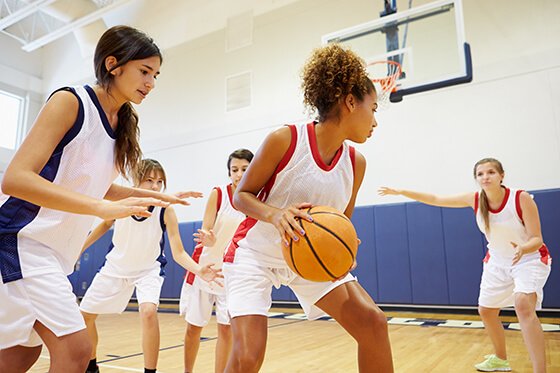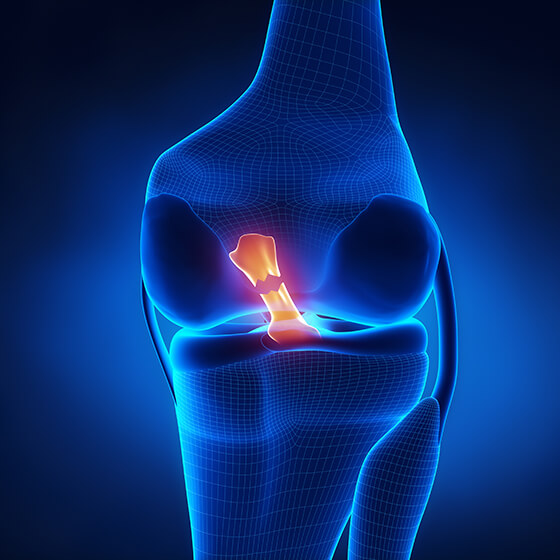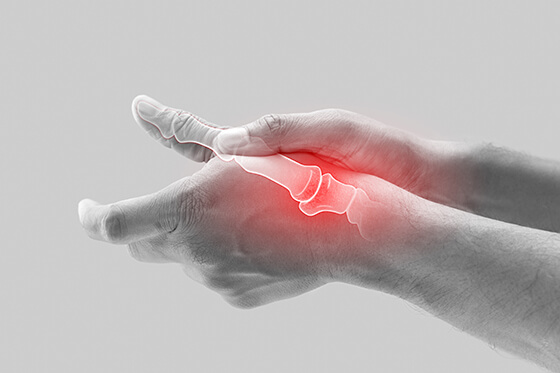From dunks to discomfort
A dive into the top five common injuries in basketball
Originally posted on 6/16/22, updated 2/26/24 to include new information.
Dribble.
Spin.
Layup.
Crack!
You land on your ankle the wrong way and now you’re out for the season.
Don’t worry, it happens every day, even to the professionals in the peak of their season.
It’s just the nature of the game.
Basketball is a sport that demands agility, speed and precise movements on the court.
However, the fast-paced nature of the game also exposes players to various injuries that can have significant implications on their careers.
Even though basketball isn’t as much of a collision sport like football, lacrosse or ice hockey, it still has its share of injuries because of certain movements.
Risks on the court
Have you ever watched a basketball game in person or on TV and saw a player’s foot twist the wrong way and wince? Or when you see them topple to the ground, holding their knee in pain?
It can be difficult to watch, especially seeing the emotional side of things, too. This sport is their livelihood and passion, after all, so any injury that takes them away from the court is a hit.
Many parts of the body can be exposed to injury when there’s sudden changes of direction and frequent jumps on the court, causing there to be many top injuries throughout this sport.
Here we’ve ranked the five most common basketball injuries:
Ankle and foot
These are perhaps the most prevalent injuries in basketball. The constant cutting, jumping and landing on another player’s foot can put stress on the ankles. In most cases, the injured ankle gets turned inward, causing the ligaments to be stretched.
Sprained ankle symptoms can include swelling, bruising, limited movement and not being able to bear weight. It can take anywhere from a few days to a few months to heal an ankle sprain, depending on the severity.
A standard treatment for ankle injuries, specifically ankle sprains, often centers around a method remembered by the acronym RICE:
- Rest
- Ice
- Compression
- Elevation
Most ankle injuries can be treated without a trip to the doctor’s office if you use the RICE method. If pain worsens or symptoms don’t improve, then a trip to urgent care or scheduling an appointment for physical therapy might be better.
With feet injuries, it’s more often than not a stress fracture, which occurs when the muscles in the foot are overused to absorb the impact of running, jumping and stopping. Doing these actions can make the bones vulnerable to fractures.
They can also be caused by improper footwear, an unbalanced surface or not recovering from a previous injury.
Knees
The knees endure substantial stress in basketball, making them susceptible to injuries such as ACL tears, meniscus tears and the patella tendon. These injuries often occur during abrupt stops, pivots or awkward landings.
- Anterior cruciate ligament (ACL): The ACL is one of the bands of ligaments connecting the thigh bone to the shin bone at the knee. ACL tears are one of the most well-known injuries in basketball and can occur with a sudden change in direction or landing after a jump. Although this ligament tear is more of a season-ending injury, current treatment used to repair the ACL can allow the player to return-to-play in their next season.
- Meniscus: The meniscus is the little brother of the ACL. Every knee has two, and often they are injured along with the ACL. The meniscus is one of two rubber-like wedge-shaped cushions for each knee joint. Without them, the thigh bones would sit directly on top of the lower leg bones. Over time, this bone on bone condition causes pain as the bones rub together. Treatment can include the ICE method (ice, compression and elevation) or even surgery and physical therapy to rehabilitate the knee.
- Patella tendonitis: Also known as jumper’s knee, this injury is caused by inflammation of the patella tendon which connects your kneecap to your shin bone. Typically, jumper’s knee can be treated by specific exercises from a physical therapist, or the RICE method, which was discussed above.
Most knee injuries in this sport are caused by intense and repetitive jumping motions, and this can lead to stress and overuse of the knees. Also, rapid motions and playing on a hard court surface can increase the likelihood of a knee injury from slips, trips or falls.
Concussions
Concussions are a type of brain injury resulting from a forceful blow to the head or body that transmits a force to the brain that leads to a temporary change in the way it functions.
It is one of the most common types of sports-related injuries due to the fast-paced nature of the game and body movements around other players.
In basketball, concussions happen for various reasons, including:
- A player falls and hits their head on the floor
- Two or more players knock into each other’s heads
- Head-to-elbow contact
- Head-to-shoulder contact
When a player sustains a concussion, the athlete will be unable to return-to-play for a period of time.This time frame can range from a few days to a couple of weeks, depending on the severity of the concussion.
Once symptoms have resolved and the player has been cleared by a health care provider, they can begin a gradual return-to-play protocol under the guidance of a medical professional or a licensed physical therapist. This involves a step-by-step progression of increasing activity levels, ensuring that symptoms do not return during each stage.
Thigh
Thigh injuries can range from minor strains and bruising to severe tears, impacting a player’s ability to perform on the court.
Some common injuries usually include:
- Hamstring strains – The muscle at the back of the thigh is stretched beyond its limit. This often results from sudden acceleration, overextension during a jump or improper warm-up techniques. Symptoms can include a sharp pain in the back of the thigh, difficulty moving or swelling.
- Quadriceps strains – Involves the muscles at the front of the thigh and can occur due to activities that require explosive leg movements, such as jumping or sprinting. Overuse, poor flexibility and improper warm-up routines can contribute to this type of strain. Symptoms usually include tenderness and weakness in the affected muscle.
- Bruising – Thigh bruises are common in basketball and result from direct impacts to the thigh muscles, often from collisions with other players or contact with hard surfaces. While these are less severe, the bruising can still cause pain and swelling in the area. Typically, an athlete can play through bruising.
Treatment for a thigh bruise might include a deep tissue massage from a licensed physical therapist or the ICE method.
Jammed fingers
Having frequent physical contact with a basketball and passing the ball consistently puts players at risk for hand injuries, including jammed fingers.
These seemingly minor injuries can have a significant impact on a player’s ability to dribble, shoot and defend effectively.
A jammed finger occurs when the finger is forcefully bent, causing damage to the ligaments and tissues surrounding the joint.
In basketball, jammed fingers often result from direct impact with the ball, collision with other players or attempts to catch or deflect passes.
Recognizing the signs and symptoms of jammed fingers is crucial for prompt diagnosis and treatment. Common symptoms can include:
- Pain and tenderness around the affected finger joint
- Swelling and bruising
- Difficulty bending or straightening the finger
- Decreased grip strength
- Instability or feeling of “looseness” in the joint
If a player experiences persistent pain or difficulty moving their finger, they should seek medical attention from an athletic trainer or health care professional to rule out more serious injuries such as fractures or dislocations.
A hand therapy plan of care with a certified clinician can also help.
Prevention against injuries
So, while basketball might not seem like the most dangerous sport, the injuries we’ve discussed happen every day, especially now that the peak of basketball season is here.
The nature of the game comes with inherent risks of injury. That’s just how it is.
Basketball players can incorporate many strategies to help decrease their chances of getting an injury and to reassure them that they can play the game safely and confidently.
- Having a proper warm-up and stretching routing - One of the most effective ways to prevent injuries in basketball is by starting with a thorough warm-up routine. Dynamic stretching exercises, like leg swings, arm circles or lunges, can help increase blood flow to the muscles, like the thigh and knee areas, improve flexibility and prepare the body for the physical demands of the game. Including basketball-specific movements such as dribbling and shooting drills into the warm-up can increase your readiness and reduce the risk of injury.
- Strength and conditioning - A well-conditioned body is better equipped to handle the physical demands of the game and resist injuries. Players should include strength training exercises targeting major muscle groups, such as squats, lunges or core workouts. Also, activities like running, cycling or swimming improves endurance and stamina on the court, reducing the likelihood of fatigue-related injuries.
- Proper technique - Players should focus on their fundamental skills to properly go through moves and skills without injury. During practices, players should work on proper shooting, passing, dribbling and safe landing and cutting techniques. To reduce the chance of collisions, know where the other players are at on the court and try not to push, charge or trip opponents.
- Appropriate footwear – Wearing proper footwear is crucial for preventing foot and ankle injuries in basketball. High-top basketball shoes with good ankle support will stabilize the foot and ankle, reducing the risk of sprains and twists. Always be on the lookout for signs of wear and tear on the shoe to maintain optimal support and cushioning.
- Listening to your body – Giving the body adequate time to rest and recover after a hard practice, game or tournament can repair and regenerate your muscles. Incorporating off-days into training schedules and listening to your body’s signals of exhaustion or pain can help prevent overuse injuries and burnout. Decrease your activity and intensity during practice if discomfort continues.
Before or after the basketball season, you should schedule an appointment to get an assessment of what your body needs. Maybe your knee is still a little weak from last season or you notice some pain in your ankle when you move it from side-to-side.
Maybe you want to get ahead of the game and increase your flexibility and strength in the muscle areas you use most while on the court. You can walk into practice or a game knowing that your body is ready to go. You reduced the likelihood of an injury recurrence by getting an evaluation.
You will receive a customized treatment plan from a licensed physical therapist that will help reach your goals and prepare you to play another season on the basketball court.
Remember, a proactive approach to injury prevention is key to keeping the game fun, competitive and safe for yourself and others.




